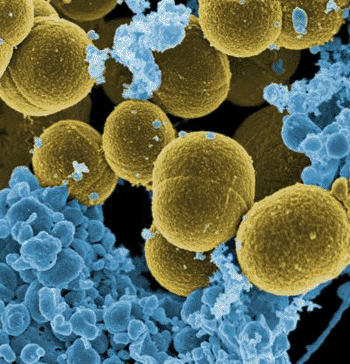Biosensor Detects Antibiotic Resistant Bacteria
By LabMedica International staff writers
Posted on 21 May 2013
Antibody conjugated latex beads have been utilized to create a biosensor designed for discrimination of methicillin resistant (MRSA) and sensitive (MSSA) Staphylococcus aureus species.Posted on 21 May 2013
The technology takes advantage of bacteriophages, simple viruses that can target and kill bacteria, and when combined with specific antibodies, can be used to produce a physical color change in a sample that indicates antibiotic resistance.

Image: The bacteria Staphylococcus aureus (Photo courtesy of Tumblr).
Scientists at Auburn University (AL, USA) collaborated with those at the Clinical Research Laboratory, Keesler Air Force Base (Biloxi, MS, USA) developed a biosensor to specifically detect and identify MRSA utilizing a device with a two-step action. The bacteriophage 12600 can be utilized as a recognition probe for S. aureus strains including those having methicillin resistance.
The S. aureus bacteriophage has a wide spectrum of hosts, including MRSA strains, was combined with a monoclonal antibody against penicillin-binding protein 2a (PBP 2a). The initial step used a S. aureus bacteriophage monolayer as a sensor probe, while the second step employed PBP 2a specific antibodies. The first step will recognize S. aureus bacteria, as the other one will be sensitive to the antibiotic-binding protein. When signals received from two steps are positive, it indicates the specific detection of MRSA. The method described in this study is rapid, does not need DNA extraction, and it is not sensitive to admixtures.
Vitaly Vodyanoy, MS, PhD, the senior author of the study said, “In our method, we can determine bacterial antibiotic resistance in 10 to 12 minutes, while other methods take hours. Alternative methods used to detect antibiotic resistance need time-intensive purification steps before multihour sequencing protocols. We envision a future where clinicians do tests with real blood or saliva samples. The virus is completely benign to humans, and we hope to use it to make antimicrobial surfaces and glassware that kill the bacteria." The study was published on May 8, 2013, in the Journal of Visualized Experiments.
Related Links:
Auburn University
Keesler Air Force Base













